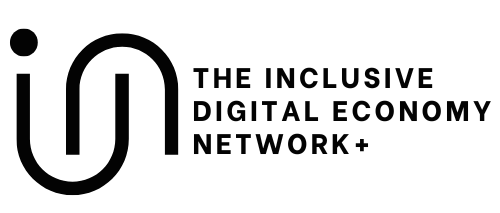Georgia Brennan-Scott is exploring living labs methods and practices. Her research will inform the legacy of the INCLUDE+ network, hopefully culminating in a living lab of our own.
Let’s close the doors on an exclusive boardroom culture and welcome a new way of running the boardroom.
Truly inclusive governance requires going beyond seeking out diverse perspectives—it requires active efforts to foster an inclusive environment. An organisation’s culture needs to be reflected in its advisory board, especially as the board’s role is, in part, to hold the organisation to its values. Unfortunately, boardrooms don’t have a great track record for being inclusive. So creating an inclusive boardroom might mean we have to throw the boardroom out with the bored-water…
While there are a multitude of factors which affect boardroom dynamics, I’m focusing primarily on gender. This is partly because there are more statistics and analysis available on gender in relation to the boardroom than other characteristics such as disablity, ethnicity, age or sexuality. This is not to suggest that gender is the most important characteristic shaping power dynamics in boardroom settings, nor to dismiss the way gender intersects with other marginalised identities to compound individual experiences of discrimination.
Welcome to the board room, take a seat
Picture the scene…
A group of board members sit around a boardroom table. The Chair raises the next point on the agenda, to which another board member has an idea. They discuss the idea with curiosity and interest for a few moments. Other board members look on, some interested, others distracted, one, becoming increasingly agitated. He speaks, interrupting his fellow member as she expresses her idea. He criticises her for highlighting links to her own research, which is, to him, clearly not the purpose of this meeting nor the role of an advisory board member. There are some smiles and apologies, aquiescing. He continues, making a further point about how this kind of talk excludes board members who are external to the project. More apologetic smiles before the meeting moves on.
The mood in the room has shifted, the Chair is much more business like and there are fewer comments from other members–except from the interruptor, who seems to be more comfortable since he got the discussion back on the ‘right’ track.
The research project I’m working on requires an advisory board, with a couple of minimum stipulations: at least 50% independent membership, an independent chair, and at least two meetings per year. Beyond these requirements, the board can take whichever form best suits the project.
However, the phrase ‘advisory board’ brings a certain set-up and setting to mind. I propose laying this setting aside, to reimagine the board. To live out the values of our project (the shorthand name for which is INCLUDE+’), it’s necessary for us to shake up the traditional way of running the advisory board.
While a quick Google search brings up a diverse representation of board membership, the reality is that board membership is often far from being diverse. In the top 500 multinational enterprises, women make up 16% of board members (OECD, March 2020). Similarly, around 15% of board members self-identify as having a minority ethnic background (Spencer Stuart, 2022). With an average board size of 10 members, that’s about 1.5 women and/or ethnic minorities per board. That’s token representation at best.
While academic research culture in higher education is different from that of the private sector, there are similarities in the representation challenges. Discrimination manifests in distinct ways in academia and I believe careful attention to creating an inclusive environment is needed here just as in corporate contexts.
‘Organisations are structured to protect male power and reward masculinity’
‘Culture is developed as a result of the group producing forms of behaviour that are advantageous to them under the conditions imposed by their building environment’
(Stapley 1991, in Rutherford 2014)
The idea we have of what’s appropriate in an advisory board meeting is shaped by our image of a boardroom. We might imagine a typical board meeting as a group of people evenly seated around a large table. The attendees’ appearance is similar enough that they blur together, forming a homogenous group whereby any member could be substituted without drawing attention. Our idea of what behaviour is ‘normal’ behaviour is shaped through iteration—the more we see one type of behaviour, or one type of person, in a boardroom the more ‘normal’ it seems.
The way gender is expressed in the boardroom is shaped in a similar way, as certain patterns are repeated consistently, they become normal. Board meetings typically require an agenda defining the topics for discussion, and someone to record the minutes of the meeting. Preparing the agenda and taking minutes is typically ascribed to someone in an administrative role, most often a woman. Alternatively, the majority of the thinkers and speakers (the board members) are men. The typically male dominant distribution in a boardroom (84% male), combined with the feminised administrative role, means certain gender roles are entrenched in a board room setting. The female role is helpful, subordinate and not assumed to offer intellectual input. Alternatively, the male role is one of authority, power and influence. Unfortunately, these ‘taken for granted norms’ privilege ‘male experience and interpretation’ (Rutherford 2014, p. 211), meaning women and other minorities must adapt their communication to be taken seriously by their established male peers.
Diversity is a trait, inclusion is a practice
‘In most organisations the stage has been set by men for many years and the actors know their parts, while newcomers have to learn tier lines if they want to take part, and pay attention to how the lead actors interact’ (Rutherford 2014, p. 209)
The first fallacy of a board meeting is that the sole purpose or the key reason for being is to make strategic judgements. To some degree, the boardroom is a space for play, for performing. What is being acted out is often seniority, expertise, power and masculinity. In the case of the opening scene, the interrupting man represents the old order while the women disrupt that order, and implicitly, disrespect the man.
‘The disruption is usually not complete, nor fully shared by everyone, leaving traces of the old gender order to co-exist with an emerging newer and more complex notion of gender at work.’ (Benshop et al., 2012 p.4) (Rutherford)
The environment of work has evolved with the increasing presence of women in senior roles, as well as discussions of diversity, inclusion, mental health and wellbeing. Perhaps the boardroom functions as one of the few places where a certain kind of man, threatened by the new world order, can assert his dominance. This kind of man would have you believe that they are a rare and dying breed, being pushed out by the new way.
Moving forward
Engaging in open-minded and thoughtful discussion in the boardroom creates little space for shows of macho intelligence and bravado. Or alternatively, creates the perfect opportunity to step up by stepping down on the ideas of others. If the boardroom is a space for shaping the direction of a project or organisation, then gatekeeping the boardroom is one way of limiting access to power over governance and decision making.
With this in mind, I think there are some lessons for the project’s advisory board over the next five years. By considering the desired intentions of the board members, we can shape the culture of the board and what role it will play. Joining the steering group for the INCLUDE+ project should not be ego-serving. It should be about giving, sharing, connecting, improving, expanding, creating, building, developing, delving into, discovering, and exploring.
Primarily, the board’s role is to provide strategic oversight. The board’s focus should be on governing, shaping, influencing and responding to the decisions of the project. This might look like pushing back, questioning and challenging–but that doesn’t need to look like criticism. A diverse board can offer diverse insight. The way members contribute might include access to networks, reflections based on personal or professional experience, an understanding of different communication styles and channels for engaging with target groups.
We can define the culture of the advisory board. We can set clear expectations and maintain boundaries.
As a start, here are a few practical steps we could take to promote an inclusive ethos:
- Using a snowball approach to board recruitment—inviting our connections to introduce us to board members with the expertise we need.
- Expressing our interest in members beyond their professional expertise—including how their personal experience informs their perspective.
- Considering diverse needs when planning meetings—including disability, dietary needs, accessibility for those travelling and joining online.
- Inviting regular feedback from board members on meetings—including how they are run, accessibility, communication channels etc.
- Encouraging a non-hierarchical dynamic in board meetings—for example, by introducing board members by name only, rather than by rank or background.
Through fostering an environment which encourages diverse perspectives and validates the unique and intersectional perspective of each member, we can develop a fruitful relationship between the board and the wider project to steer the project in a meaningful direction.
Further reading
Baxter, J., 2008. Is it all tough talking at the top. A post-structuralist analysis of the construction of gendered speaker identities of British business leaders within interview narratives. Gender and Language, 2(2), pp.197-222.
Huse, M. and Grethe Solberg, A., 2006. Gender‐related boardroom dynamics: How Scandinavian women make and can make contributions on corporate boards. Women in management review, 21(2), pp.113-130.
Martin, P.Y., 2006. Practising gender at work: Further thoughts on reflexivity. Gender, work & organization, 13(3), pp.254-276.
Rutherford, S., 2014. Gendered organizational cultures, structures and processes: the cultural exclusion of women in organizations. In Gender in Organizations (pp. 193-216). Edward Elgar Publishing.

